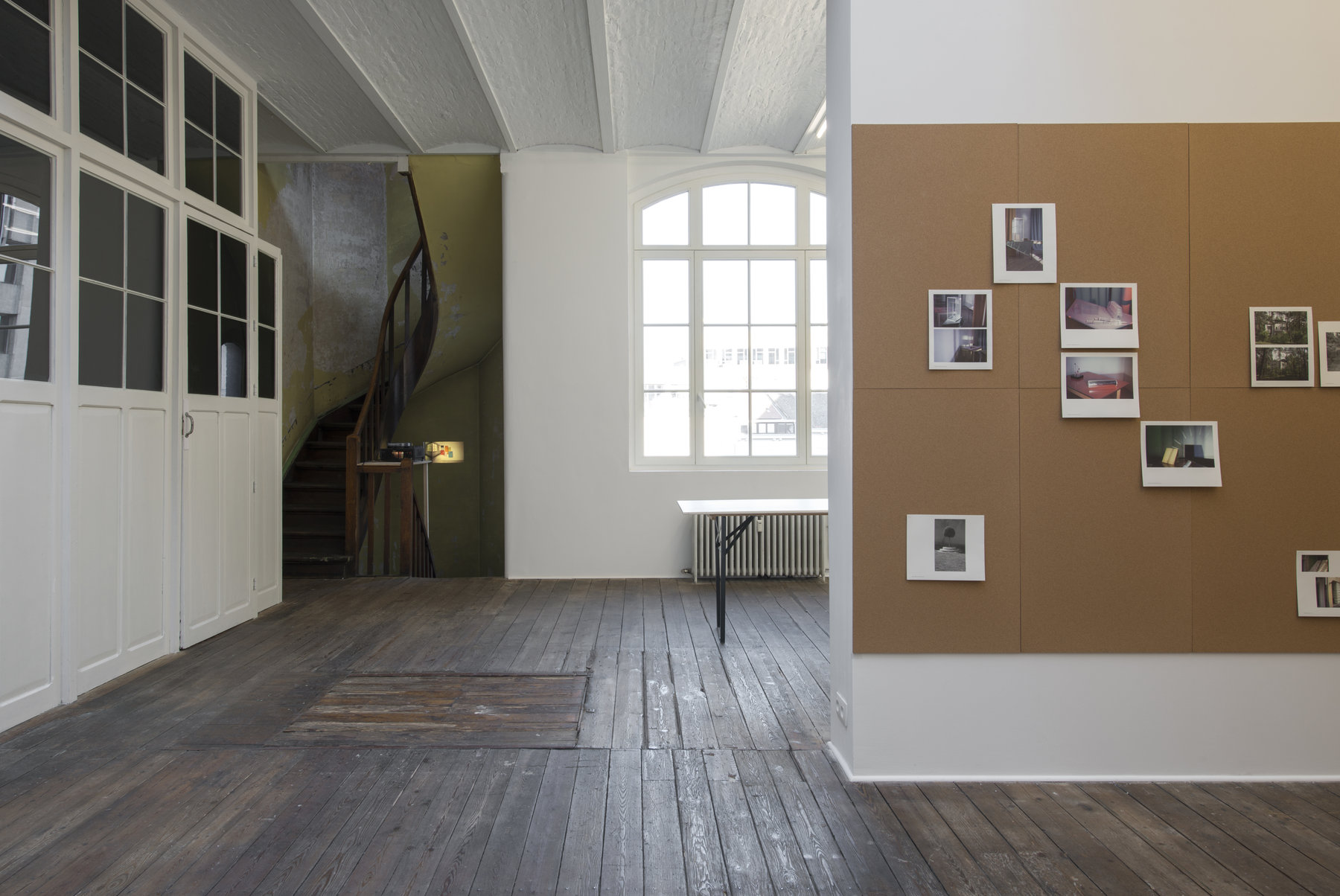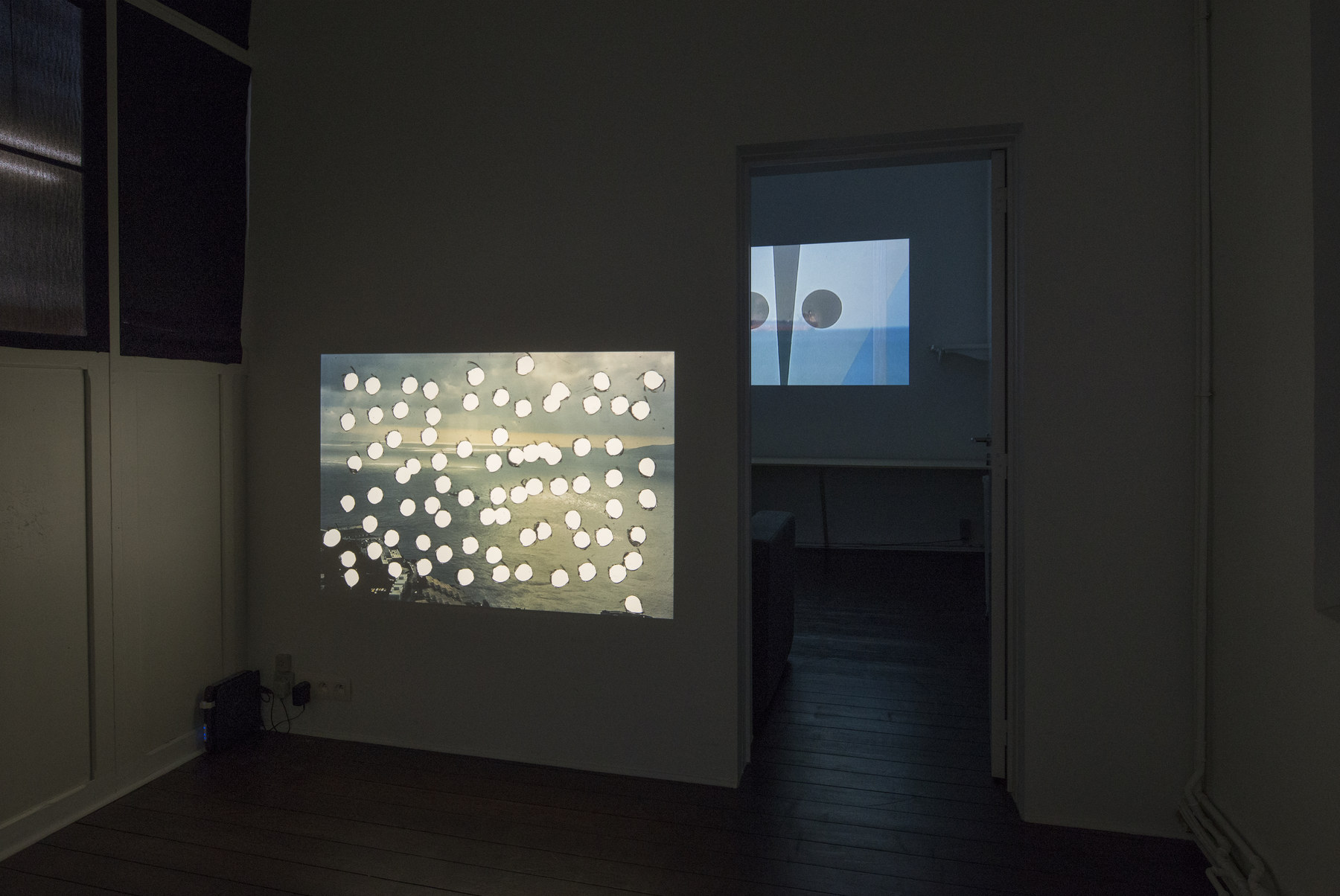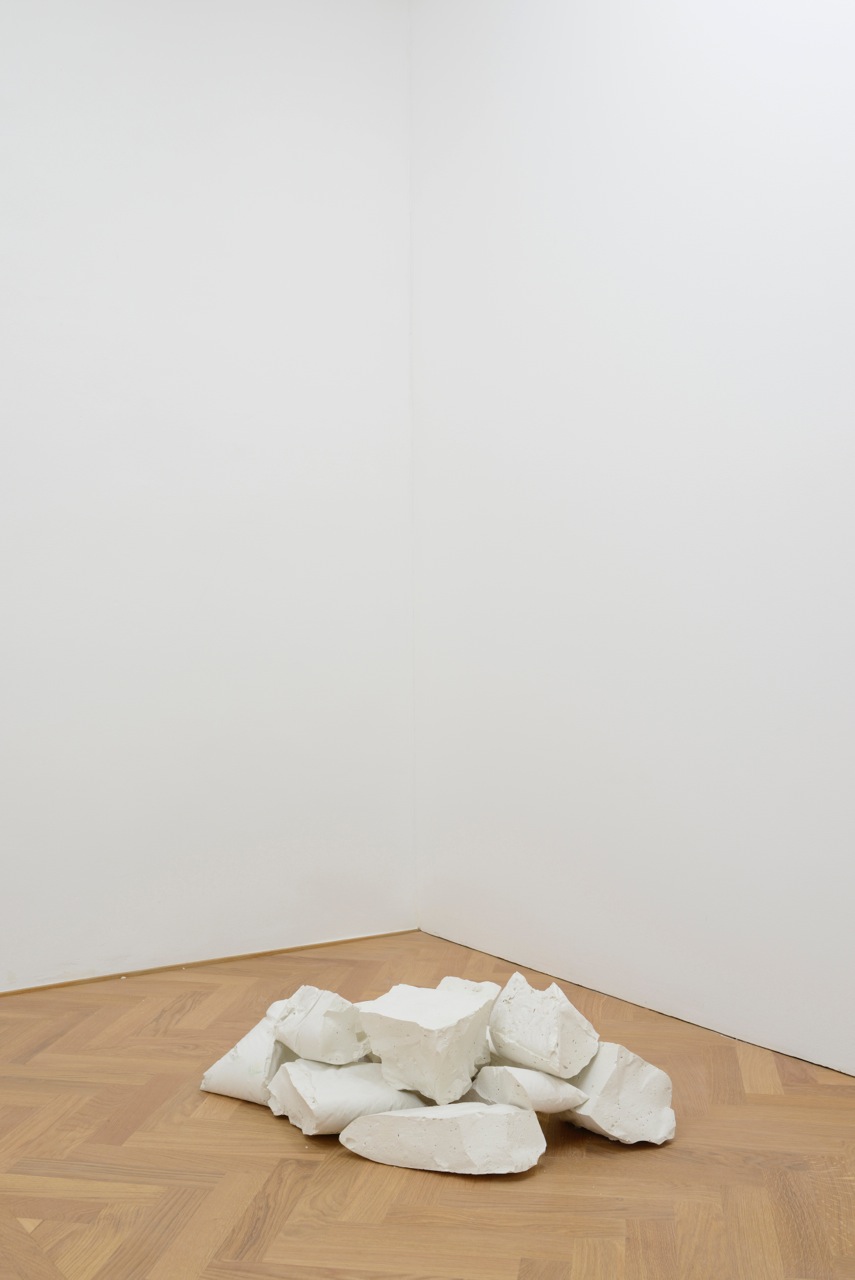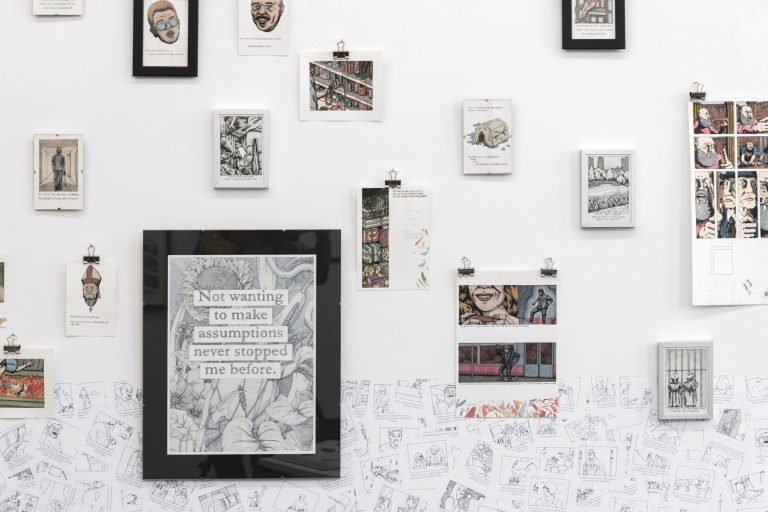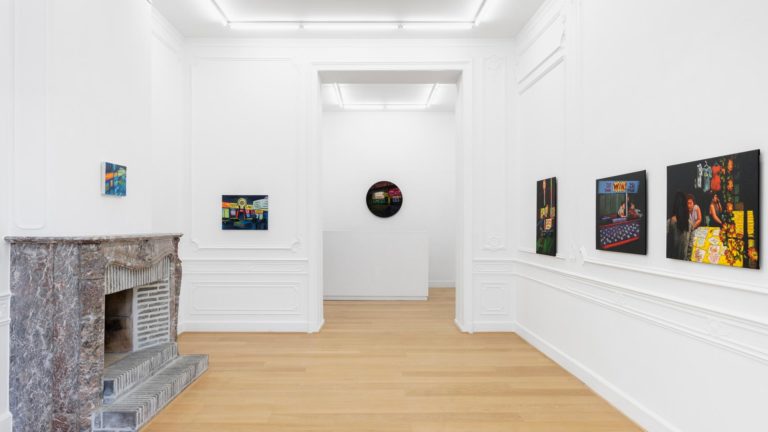Artists: Giovanni Anselmo, stanley brouwn, André Cadere, Peter Downsbrough, Runo Lagomarsino, Basim Magdy, Charlotte Moth
Exhibition title: DISPLACEMENT (prologue)
Curated by: Lilou Vidal, Bureau des Réalités
Venue: Independent Régence, Brussels, Belgium
Date: January 27 – March 4, 2015
Photography: images copyright and courtesy of the artists, Independent Régence and Bureau des Réalités
“Displacement (prologue)” functions as a prelude to a series of projects initiated by Bureau des Réalités throughout its 2017 traveling program abroad. This foreword constitutes the impetus to various approaches around issues of displacement. Its multiple definitions reflect its plural essence (action, geography, economy, politics, physics, chemistry, geometry, psychoanalysis, etc.).
Aside from its first nature that derives from the laws of physics and the movement of a body in space, it would be tempting to retrace the exciting textual anthology of displacement from the first narratives on sailing and voyages to Rousseau’s “Reveries of a solitary walker”, Nietzsche’s walks, as well as the rambles of the nineteenth century (Woolf, Poe, Baudelaire), or the wanderings of Rimbaud, Perec and Debord, to name but a few, but this, however, is not the topic at hand.
As a vector, sign, mechanism and consequence, displacement lies at the heart of any form of process. The history of modern art carries within itself the desire to free the artwork from its static materiality and turn art into a vital experience. In today’s globalized world, it has become a way of life and a societal reality. This prologue aims to highlight the different approaches addressed since the late 60s and early 70s by a selection of emblematic figures of Conceptual Art and a younger generation of artists with heterogeneous methods that have chosen displacement as their source or subject of reflection.
Walkers, urban nomads, modern pilgrims – Giovanni Anselmo, stanley brouwn, and André Cadere each have, in their own way, created normative and sensitive systems to measure both the body and the object in tangible and infinite space so as to fathom the immeasurability of our presence in the universe.
The strategic contestation and the disarray of the institutional codes of the presentational modes of the artwork since the end of the 60’s, resonates today with force and in an almost ubiquitous manner in the practice of the exhibition and the circulation of forms, ideas and language. Cadere, in this respect, is one of the forerunners. “My work does not show permutations but a relationship between order and error”, he wrote to Yvon Lambert in 1978. “I go everywhere with my work. If I think of not answering anything, that would be a very old and traditional artistic attitude. Now, precisely, what I do is extremely simple and I want to keep it so; because of this, one must speak – when the situation allows it. In this sense speech in my art becomes extremely important. “ May 22, 1978. Letter to Yvon Lambert »
The error, systematically incorporated in the ordered arrangement of the colored segments in Cadere’s round wooden bars, forms part of the method of discourse and action which he has succeeded in initiating by himself becoming the tool and the disruptive element within the codes and the system of art (see, in this respect, the archives and the catalogue “Histoire d’un travail”, published by Cadere himself in 1977-78 and published by Herbert-Gewad).
Since the 1960’s the series entitled “this way brouwn (1960-1964)” by stanley brouwn – consisting of a set of sheets with notes drawn by passersby in the street whom the artist has asked for directions and stamped “this way brouwn” – already announces the artist’s program based on the daily activity of man – walking, taking steps –, the most ordinary movement possible and the best able to bring attention to the spatial dimension of the world. He will subsequently undertake an extremely precise tally of his steps and a meticulous classification of his movements. He refutes classical norms and establishes a series of subjective measures relating to parts of his body (his foot, his step, his elbow), “I’ve become a distance,” he said.
While Cadere became the mobile carrier of his work and brouwn a unit of terrestrial measuring, Anselmo asserts himself as the tangible witness of the invisible cosmic forces of the world: “I, the world, things, life, we are forces in action. The essential point is not to let them crystallize.” G.A.
Since the revelation of his art at the top of Stromboli in 1965: “La mia ombra verso the infinito dalla cima dello Stromboli durante alba del 16 Agosto 1965”, all his research relates to the order of things, the cycles of nature, gravitation, and energy fields intrinsic to all movement, and the suggestion of a fringe territory beyond the framework of art – “Direzione” 1968, “Particolare”, 1972, “Oltremare a Ovest”, but also his desire to give a concrete form to the idea of infinity – “Particolare di Infinito” 1969, “Cielo accorciato”, 1969-1970 and to make tactile the enigma of the universe.
The exhibition does not, as such, articulate itself as a group exhibition, but rather as a conglomerate of individual and complementary paths – leading from the teachings of Conceptual Art to a free and open approach to what displacement may be in its current understanding and form, while also revealing social and migratory issues.
For several years, Charlotte Moth has developed a methodology for image collection from personal sources named “Travelogue”. In a kaleidoscopic set-up, the artist presents the pages of a book, strewn across an existing architecture, in which the torn-apart pages create a choreography and a renewed meaning. The scenography on corkboard is reminiscent of the labyrinthine aesthetics of a study or research office.
Peter Downsbrough has been engaging, since the early 1970s, and through the relationship between urban space and language, with notions of position and framing.
In his films, the human figure gradually disappears in favor of the presence of the city and its architectural and circulatory mechanisms. The video “Set(ing)” from 2003 presents a state that exists between a fixed plan of urban outdoor areas in action and a slow travelling shot of the interior of a conference room of a silent corporate office in the neighborhood of La Défense in Paris. The black and white film is narrated by a female voice-over and accompanied by a sonic rhythm (the 1979 soundtrack “And On”), enumerating architectural numbers and details while letters and words slide and overlap the space in a play of verticals and horizontals as the images progress. The method and the object interpenetrate each other, as movements of movements.
Basim Magdy’s super 8 film “Time Laughs Back at You Like a Sunken Ship” from 2012, rather presents itself as a modern poetic tale or a dream whose ending remains in doubt. We see a character walking around, wearing a mask in a style reminiscent of the Bauhaus aesthetic, its mirrored backside reflecting the space, in what appears to be a Biodome or a closed botanical garden. The exotic sensation generated by these floral transplants indirectly evokes transfers of culture and civilization, as well as migratory flows.
This is superimposed with images of modernist buildings, the amphitheater and city of Alexandria, and maritime views and rocks.
Meanwhile, a narrative device mixing musical melody and crackling sounds, alters our fleeting understanding of the visual sense.
The confrontation with the industrial materials of the mirrors in this falsely tropical atmosphere echoes the Robert Smithson’s 1969 “Yucatan Mirror Displacements (1-9)”, and the problem of the “non-sites” in their relation to time and space.
Runo Lagomarsino was born in Scandinavia to Argentinian parents descendant from an Italian immigrant family who fled Europe during the First World War. The biographical path of the artist embodies the same history of colonialism which he has never ceased to explore in his work throughout his career. The projection of the 80 perforated slides “Sea Grammar”, 2015 addresses the tragedy of the migrant in a metaphorical and sober manner. An image depicting a view of the Strait of Gibraltar is perforated by a first hole, then by another, and another, and so on, in the monotonous rhythm of the slide projector, until the image disappears completely in the light. As a tribute to the castaways of the Mediterranean, “Sea Grammar” also recalls the sailor’s expression: “to make a hole in the sea”, used when one of them disappears in the waves.
Parallel to its critical positioning of the office context as a polysemic tool, open to the production of thoughts, Bureau des Réalités thus proposes a telescoping of work practices. Hence, the Independent offices are moved to the very heart of the exhibition space in order to make permeable the habits of the organizers and their work processes, while the latter becomes a space for possible encounters. The visitor is led to wander through the exhibition space and cross the thresholds of rooms usually dedicated to private use, inviting rest and contemplation, before returning, once again, to the meanders of the displacement.
Lilou Vidal, January 2017
Translation by Michael Meert
Thanks to all the artists, Estate of André Cadere and Galerie Hervé Bize, Nancy Frac Bourgogne, Dijon, Hunt Kastner, Prague, Marcelle Alix, Paris, Lynda Morris, Nils Stærk Copenhagen, Micheline Szwajcer, Antwerp
Andre Cadere and Lynda Morris, Conversation, 1972
Ill: photograph of André Cadere walking past the arched doorway of Banco – 1975 – image used for postcard – Lynda Morris Archive – credit photo: Lynda Morris archive and Galleria Massimo Minini, Brescia, courtesy Estate of André Cadere and Galerie Hervé Bize, Nancy
Charlotte Moth, Book installation, 2011, display of 56 colour and black and white plates, variable dimensions (each plate: 27,5 x 22,5 cm), courtesy Marcelle Alix, Paris, exhibition view, Displacement (prologue), Bureau des Réalités at Independent Régence, Brussels
Charlotte Moth, Book installation, 2011, display of 56 colour and black and white plates, variable dimensions (each plate: 27,5 x 22,5 cm), courtesy Marcelle Alix, Paris, exhibition view, Displacement (prologue), Bureau des Réalités at Independent Régence, Brussels
Charlotte Moth, Book installation, 2011, display of 56 colour and black and white plates, variable dimensions (each plate: 27,5 x 22,5 cm), courtesy Marcelle Alix, Paris, exhibition view, Displacement (prologue), Bureau des Réalités at Independent Régence, Brussels
Charlotte Moth, Book installation, 2011, display of 56 colour and black and white plates, variable dimensions (each plate: 27,5 x 22,5 cm), courtesy Marcelle Alix, Paris, exhibition view, Displacement (prologue), Bureau des Réalités at Independent Régence, Brussels
Charlotte Moth, Book installation, 2011, display of 56 colour and black and white plates, variable dimensions (each plate: 27,5 x 22,5 cm), courtesy Marcelle Alix, Paris, exhibition view, Displacement (prologue), Bureau des Réalités at Independent Régence, Brussels
Charlotte Moth, Book installation, 2011, display of 56 colour and black and white plates, variable dimensions (each plate: 27,5 x 22,5 cm), courtesy Marcelle Alix, Paris, exhibition view, Displacement (prologue), Bureau des Réalités at Independent Régence, Brussels
Charlotte Moth, Book installation, 2011, display of 56 colour and black and white plates, variable dimensions (each plate: 27,5 x 22,5 cm), courtesy Marcelle Alix, Paris, exhibition view, Displacement (prologue), Bureau des Réalités at Independent Régence, Brussels
Charlotte Moth, Book installation, 2011, display of 56 colour and black and white plates, variable dimensions (each plate: 27,5 x 22,5 cm), courtesy Marcelle Alix, Paris, exhibition view, Displacement (prologue), Bureau des Réalités at Independent Régence, Brussels
Charlotte Moth, Book installation, 2011, display of 56 colour and black and white plates, variable dimensions (each plate: 27,5 x 22,5 cm), courtesy Marcelle Alix, Paris, exhibition view, Displacement (prologue), Bureau des Réalités at Independent Régence, Brussels
Charlotte Moth, Book installation, 2011, display of 56 colour and black and white plates, variable dimensions (each plate: 27,5 x 22,5 cm), courtesy Marcelle Alix, Paris, exhibition view, Displacement (prologue), Bureau des Réalités at Independent Régence, Brussels
Peter Downsbrough, Set(ing), 2003, , b/w video with sound, 4’20, collection Frac Bourgogne, exhibition view, Displacement (prologue), Bureau des Réalités at Independent Régence, Brussels
Peter Downsbrough, Set(ing), 2003, , b/w video with sound, 4’20, collection Frac Bourgogne, exhibition view, Displacement (prologue), Bureau des Réalités at Independent Régence, Brussels
Peter Downsbrough, Set(ing), 2003, , b/w video with sound, 4’20, collection Frac Bourgogne, exhibition view, Displacement (prologue), Bureau des Réalités at Independent Régence, Brussels
Peter Downsbrough, Set(ing), 2003, , b/w video with sound, 4’20, collection Frac Bourgogne, exhibition view, Displacement (prologue), Bureau des Réalités at Independent Régence, Brussels
Charlotte Moth, untitled, 2010, 80 analogue slides and blue tinted mirror, mirror: 22 x 33 x 2 cm, courtesy Marcelle Alix, Paris, exhibition view Displacement (prologue), Bureau des Réalités at Independent Régence, Brussels
Charlotte Moth, untitled, 2010, 80 analogue slides and blue tinted mirror, mirror: 22 x 33 x 2 cm, courtesy Marcelle Alix, Paris, exhibition view Displacement (prologue), Bureau des Réalités at Independent Régence, Brussels
André Cadere, B 02403010, 1975, Barre de bois rond, (bleu, blanc, rouge, jaune), 120 cm x 2,5 cm, private collection, courtesy Estate of André Cadere and Galerie Hervé Bize
André Cadere, B 02403010, 1975, Barre de bois rond, (bleu, blanc, rouge, jaune), 120 cm x 2,5 cm, private collection, courtesy Estate of André Cadere and Galerie Hervé Bize
Histoire d’un travail, publication devised by André Cadere in 1977-1978 published by Anton Herbert in 1982
Histoire d’un travail, publication devised by André Cadere in 1977-1978 published by Anton Herbert in 1982
Runo Lagomarsino, Sea Grammar, 2015, Dia Projection loop, 80 perforated images in a slide projection carousel with, timer, 1 original image (Mediterranean sea); Basim Magdy, Time Laughs Back at You Like a Sunken Ship, 2012, Super 8 film transferred to HD video. 9 min. 31 sec., exhibition view Displacement (prologue) , Bureau des Réalités at Independent Régence, Brussels
Runo Lagomarsino, Sea Grammar, 2015, Dia Projection loop, 80 perforated images in a slide projection carousel with, timer, 1 original image (Mediterranean sea)
Basim Magdy, Time Laughs Back at You Like a Sunken Ship, 2012, Super 8 film transferred to HD video. 9 min. 31 sec.
Basim Magdy, Time Laughs Back at You Like a Sunken Ship, 2012, Super 8 film transferred to HD video. 9 min. 31 sec.
Giovanni Anselmo, Particolare, 1972 – 1974, 2 slides projection (private collection), exhibition view, Displacement (prologue), Bureau des Réalités at Independent Régence, Brussels
Giovanni Anselmo, Particolare, 1972 – 1974, 2 slides projection (private collection), exhibition view, Displacement (prologue), Bureau des Réalités at Independent Régence, Brussels
Giovanni Anselmo, Particolare, 1972 – 1974, 2 slides projection (private collection), exhibition view, Displacement (prologue), Bureau des Réalités at Independent Régence, Brussels
Giovanni Anselmo, Cielo accorciato, 1969-70, incision on iron, 140 cm x 4 cm (private collection), exhibition view, Displacement (prologue), Bureau des Réalités at Independent Régence, Brussels
Giovanni Anselmo, Cielo accorciato, 1969-70, incision on iron, 140 cm x 4 cm (private collection), exhibition view, Displacement (prologue), Bureau des Réalités at Independent Régence, Brussels
Giovanni Anselmo, Cielo accorciato, 1969-70, incision on iron, 140 cm x 4 cm (private collection), exhibition view, Displacement (prologue), Bureau des Réalités at Independent Régence, Brussels
Ill: Document from Lynda Morris Archive , Espace et Politique, a discussion on a work presented by André Cadere in the bus shelter at the bus station Saint Germain des Près – 12 May 1976- credit photo: Lynda Morris archive – courtesy Estate of André Cadere and Galerie Hervé Bize, Nancy

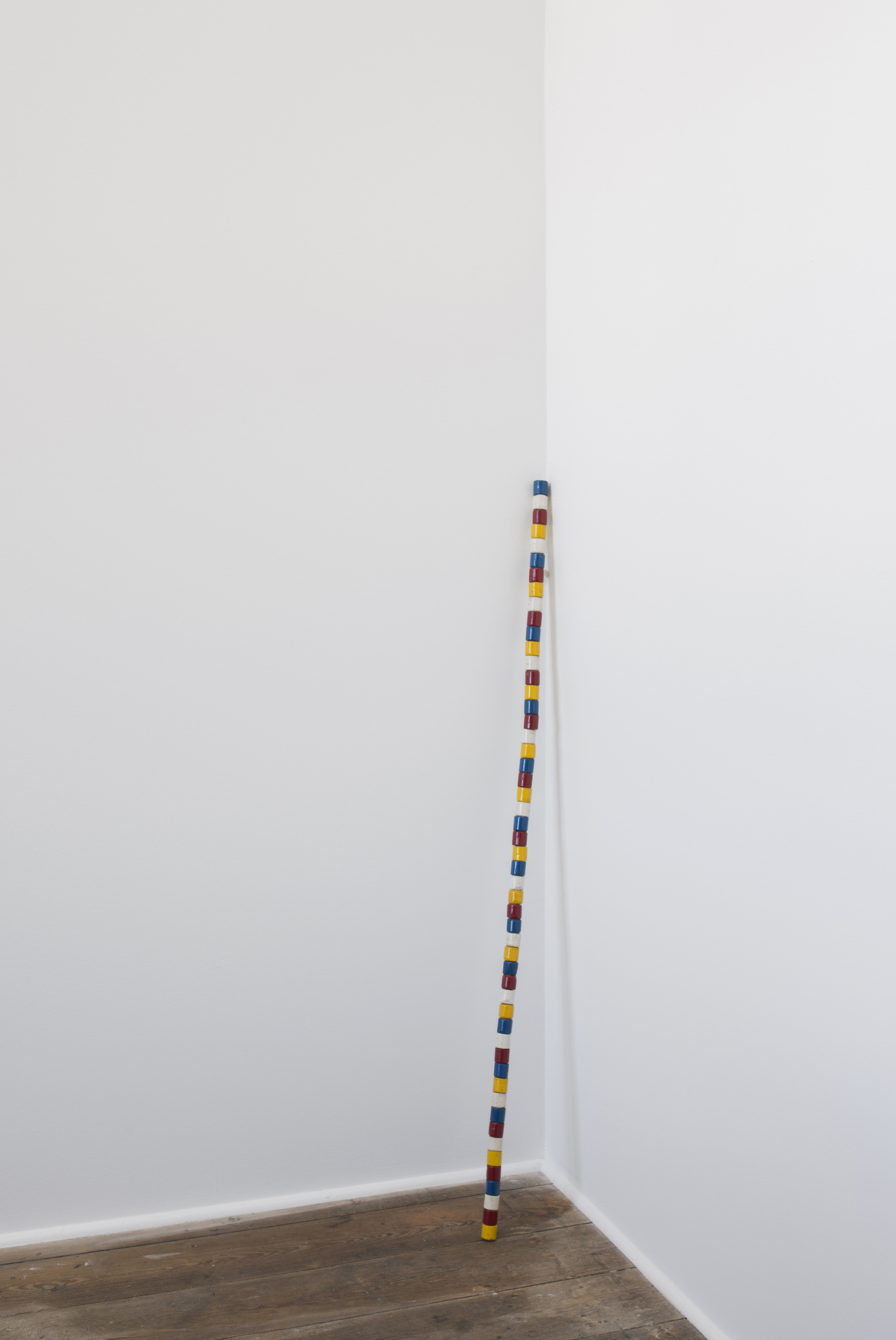










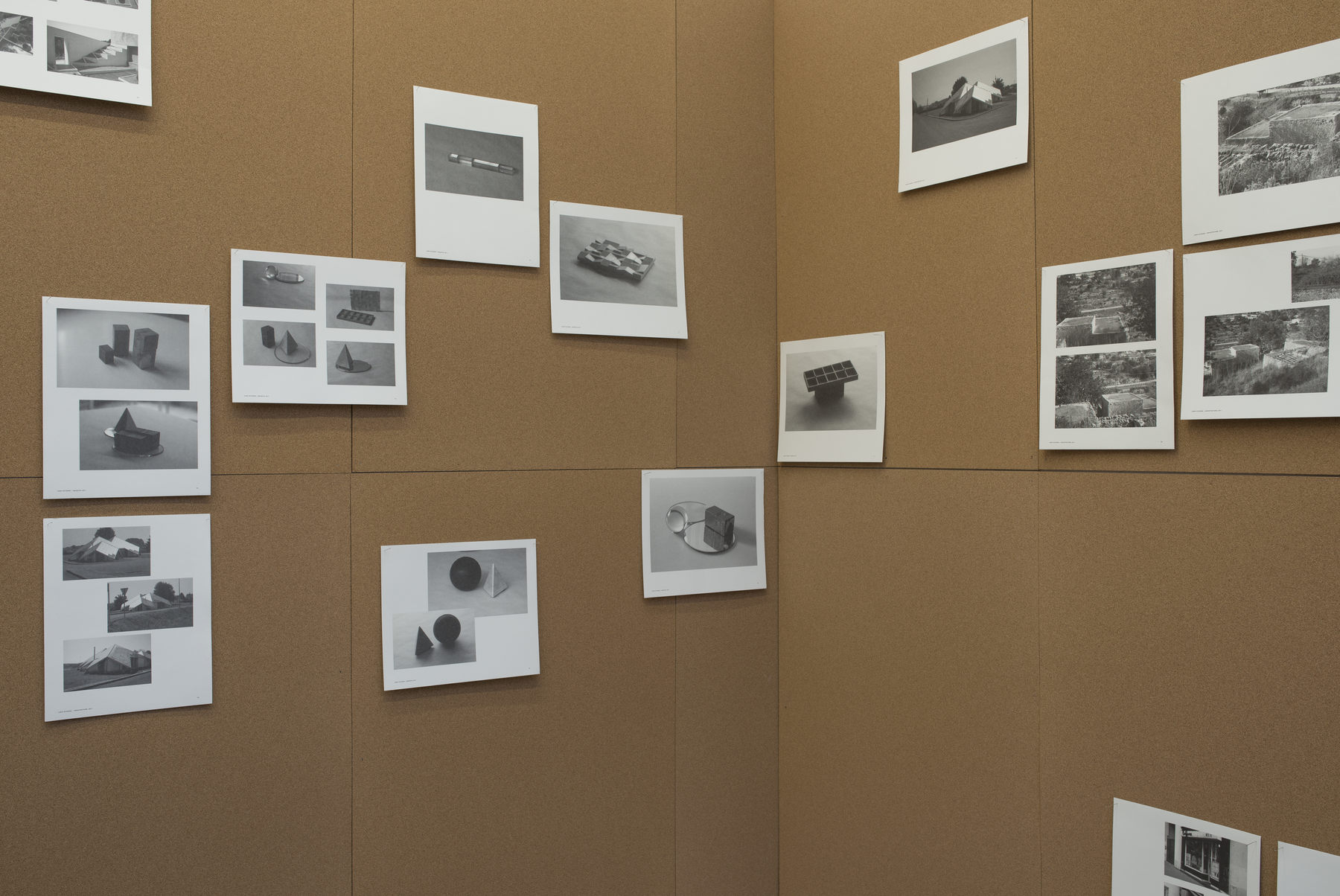

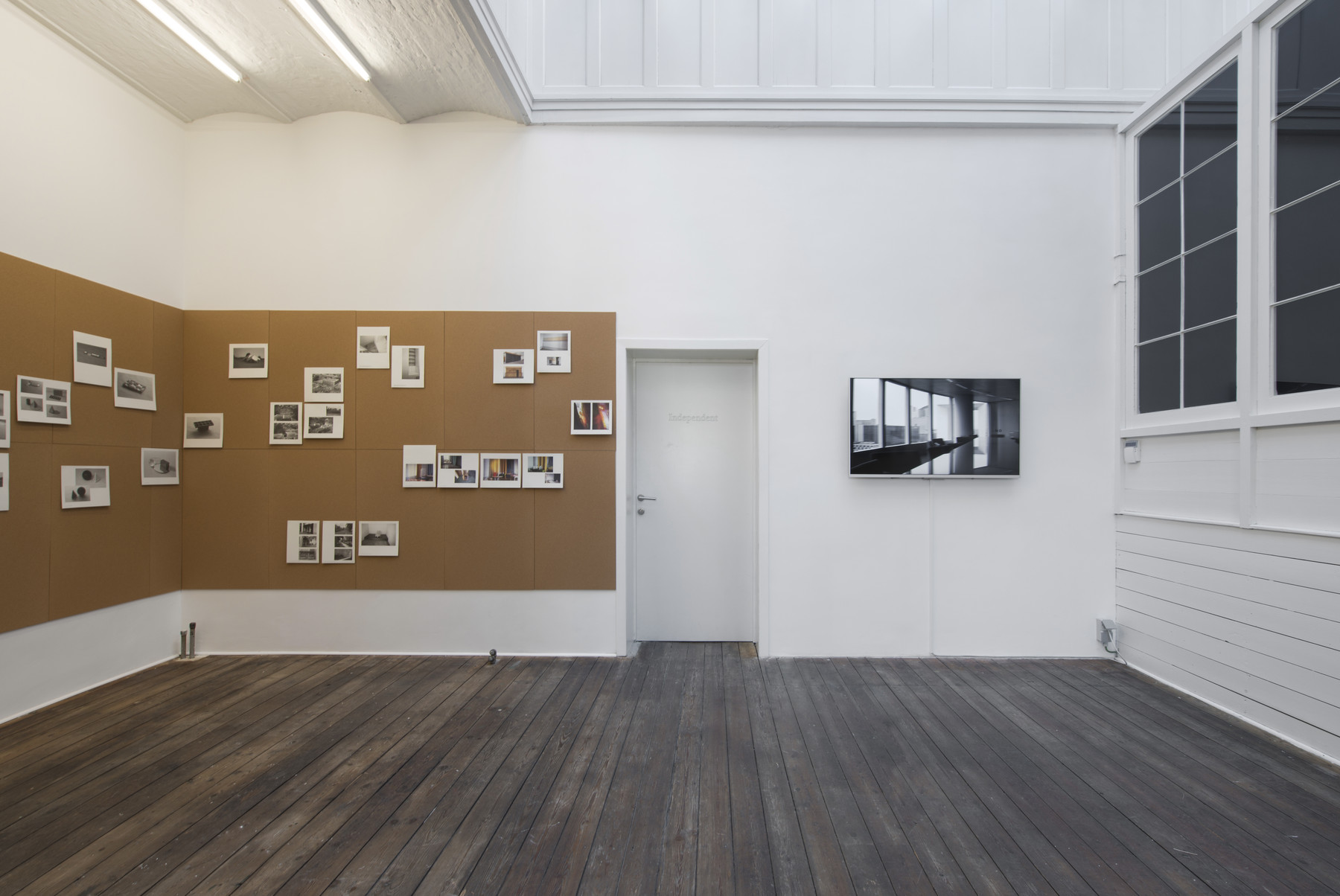
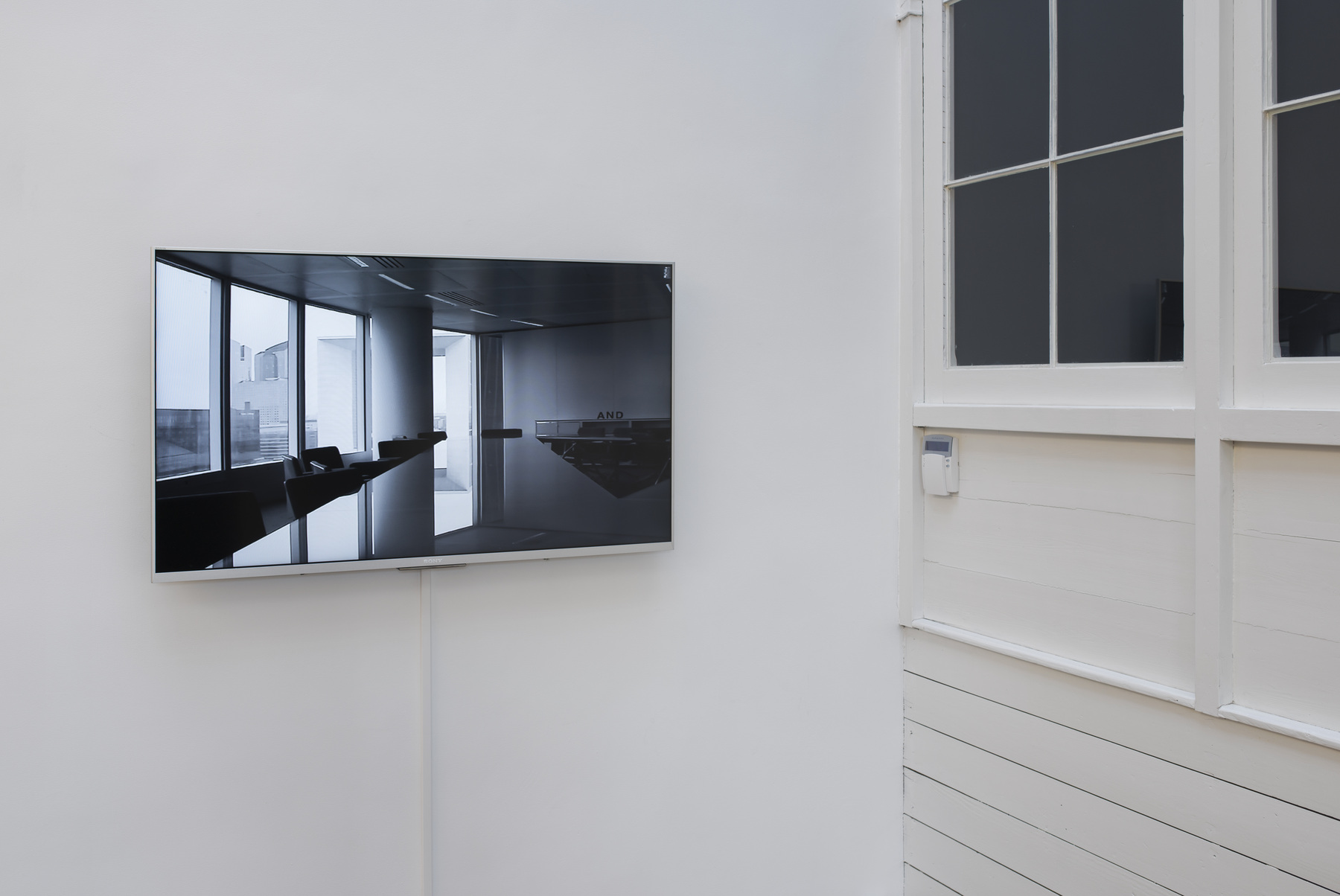
![set[ing]-02](https://artviewer.org/wp-content/uploads/2017/03/seting-02.jpg)
![set[ing]-03-1](https://artviewer.org/wp-content/uploads/2017/03/seting-03-1.jpg)
